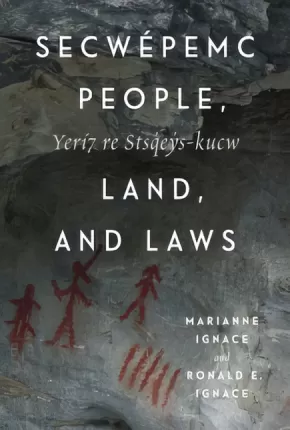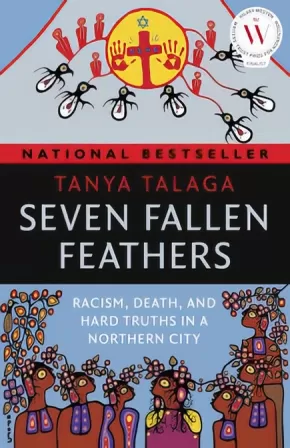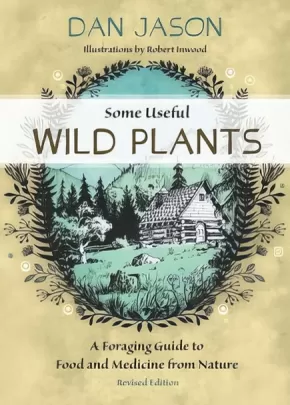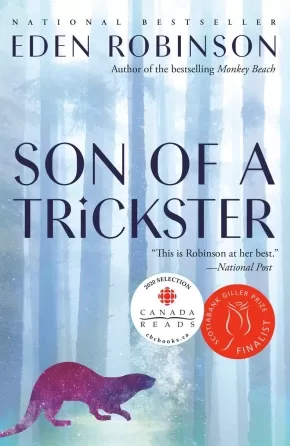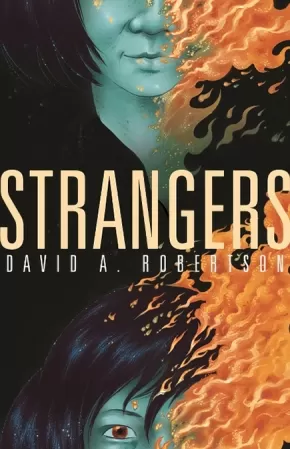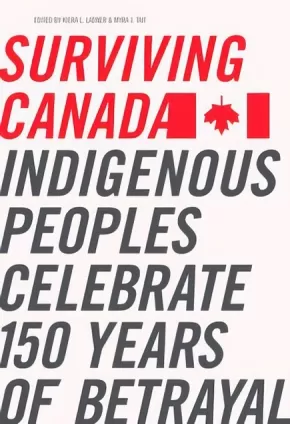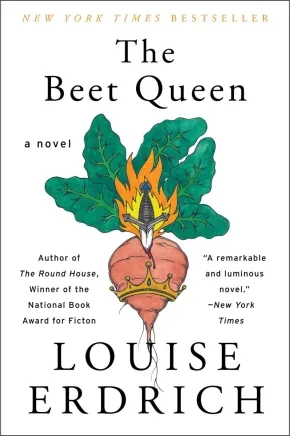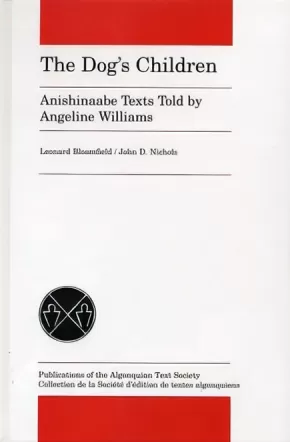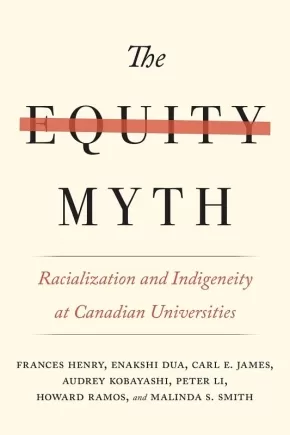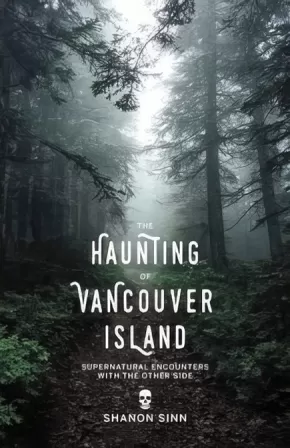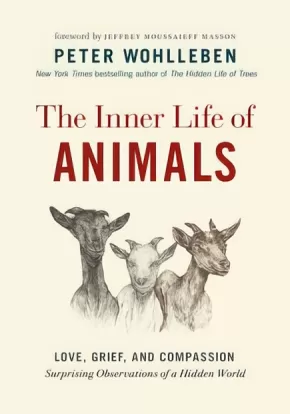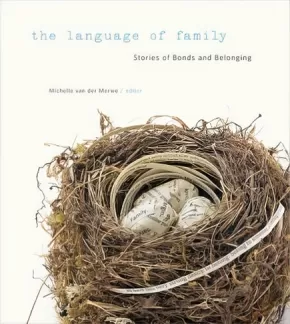Browse Books for Adults
Synopsis:
Secwépemc People, Land, and Laws is a journey through the 10,000-year history of the Interior Plateau nation in British Columbia. Told through the lens of past and present Indigenous storytellers, this volume detail how a homeland has shaped Secwépemc existence while the Secwépemc have in turn shaped their homeland. Marianne Ignace and Ronald Ignace, with contributions from ethnobotanist Nancy Turner, archaeologist Mike Rousseau, and geographer Ken Favrholdt, compellingly weave together Secwépemc narratives about ancestors’ deeds. They demonstrate how these stories are the manifestation of Indigenous laws (stsq'ey') for social and moral conduct among humans and all sentient beings on the land, and for social and political relations within the nation and with outsiders. Breathing new life into stories about past transformations, the authors place these narratives in dialogue with written historical sources and knowledge from archaeology, ethnography, linguistics, earth science, and ethnobiology. In addition to a wealth of detail about Secwépemc land stewardship, the social and political order, and spiritual concepts and relations embedded in the Indigenous language, the book shows how between the mid-1800s and 1920s the Secwépemc people resisted devastating oppression and the theft of their land, and fought to retain political autonomy while tenaciously maintaining a connection with their homeland, ancestors, and laws. An exemplary work in collaboration, Secwépemc People, Land, and Laws points to the ways in which Indigenous laws and traditions can guide present and future social and political process among the Secwépemc and with settler society.
Synopsis:
In 1966, twelve-year-old Chanie Wenjack froze to death on the railway tracks after running away from residential school. An inquest was called and four recommendations were made to prevent another tragedy. None of those recommendations were applied.
More than a quarter of a century later, from 2000 to 2011, seven Indigenous high school students died in Thunder Bay, Ontario. The seven were hundreds of miles away from their families, forced to leave home and live in a foreign and unwelcoming city. Five were found dead in the rivers surrounding Lake Superior, below a sacred Indigenous site. Jordan Wabasse, a gentle boy and star hockey player, disappeared into the minus twenty degrees Celsius night. The body of celebrated artist Norval Morrisseau’s grandson, Kyle, was pulled from a river, as was Curran Strang’s. Robyn Harper died in her boarding-house hallway and Paul Panacheese inexplicably collapsed on his kitchen floor. Reggie Bushie’s death finally prompted an inquest, seven years after the discovery of Jethro Anderson, the first boy whose body was found in the water.
Using a sweeping narrative focusing on the lives of the students, award-winning investigative journalist Tanya Talaga delves into the history of this small northern city that has come to manifest Canada’s long struggle with human rights violations against Indigenous communities.
A portion of each sale of Seven Fallen Feathers will go to the Dennis Franklin Cromarty Memorial Fund, set up in 1994 to financially assist Nishnawbe Aski Nation students’ studies in Thunder Bay and at post-secondary institutions.
Awards
- 2018-2019 First Nation Communities Read
- 2018 RBC Taylor Prize
Reviews
“Talaga has written Canada’s J’Accuse, an open letter to the rest of us about the many ways we contribute — through act or inaction — to suicides and damaged existences in Canada’s Indigenous communities. Tanya Talaga’s account of teen lives and deaths in and near Thunder Bay is detailed, balanced and heart-rending. Talaga describes gaps in the system large enough for beloved children and adults to fall through, endemic indifference, casual racism and a persistent lack of resources. It is impossible to read this book and come away unchanged.” — RBC Taylor Prize Jury Citation
“In Seven Fallen Feathers, Tanya Talaga delves into the lives of seven Indigenous students who died while attending high school in Thunder Bay over the first eleven years of this century. With a narrative voice encompassing lyrical creation myth, razor-sharp reporting, and a searing critique of Canada’s ongoing colonial legacy, Talaga binds these tragedies — and the ambivalent response from police and government — into a compelling tapestry. This vivid, wrenching book shatters the air of abstraction that so often permeates news of the injustices Indigenous communities face every day. It is impossible to read Seven Fallen Feathers and not care about the lives lost, the families thrust into purgatory, while the rest of society looks away.” — Hilary Weston Writers’ Trust Prize for Nonfiction Jury Citation
“[A]n urgent and unshakable portrait of the horrors faced by Indigenous teens going to school in Thunder Bay, Ontario, far from their homes and families. . . . Talaga’s incisive research and breathtaking storytelling could bring this community one step closer to the healing it deserves.” — Booklist, STARRED REVIEW
“Seven Fallen Feathers may prove to be the most important book published in Canada in 2017. Tanya Talaga offers well-researched, difficult truths that expose the systemic racism, poverty, and powerlessness that contribute to the ongoing issues facing Indigenous youth, their families, and their communities. It is a call to action that deeply honours the lives of the seven young people; our entire nation should feel their loss profoundly.” — Patti LaBoucane-Benson, author of The Outside Circle
“[W]here Seven Fallen Feathers truly shines is in Talaga’s intimate retellings of what families experience when a loved one goes missing, from filing a missing-persons report with police, to the long and brutal investigation process, to the final visit in the coroner’s office. It’s a heartbreaking portrait of an indifferent and often callous system . . . Seven Fallen Feathers is a must-read for all Canadians. It shows us where we came from, where we’re at, and what we need to do to make the country a better place for us all.” — The Walrus
Educator Information
The Canadian Indigenous Books for Schools list recommends this resource for Grade 12 English Language Arts and Social Studies.
Curriculum Connections: Indigenous Studies, History, Health
Additional Information
376 pages | 5.50" x 8.50" | 8-page colour insert and maps
Synopsis:
With over forty years since its original printing, and over 30,000 copies sold, this bestselling guide still remains a trusted and much-consulted reference for those interested in identifying, foraging and growing wild plants for food and medicine. Now Some Useful Wild Plants is back in print for a new generation of foragers and herbalists.
Some Useful Wild Plants contains sections on useful herbs, trees, berries and seaweeds, as well as commentary on avoiding poisonous species. Pick the young tender leaves of orach, salsify and miner's lettuce for a delicious and vitamin-rich spring salad or stir-fry. Concoct a cherry bark and licorice fern syrup to soothe a sore throat. Repel insects naturally using sage oil or vanilla leaf. From alder to yarrow, each featured plant has useful descriptors for identification and details on how to harvest, as well as how the plant is traditionally used for medicine by First Nations, pioneers and contemporary herbalists. Clear line drawings are provided to assist foragers in accurate identification. Directions are included for the preparation of ointments, salves, poultices, compresses and tinctures.
Dan Jason also addresses sustainability when foraging to ensure that harvesting supports the continuous growth of the plant and the natural environment.
Reviews
Great for both foragers and growers, the book draws from many sources, including the rich traditions of First Nations healers and Doukhobor wildcrafters, to identify the properties and uses of a wide range of plant life.... For those who feel skeptical about corporate farming and modern society’s mediated relationship with nature, this guide is a breath of fresh air. — Publishers Weekly
Occasional black-and-white illustrations enhance this venerable and practical guide sustainable foraging. From edible wild plants, to natural remedies for common ailments, to poisonous plants that should be meticulously avoided, Some Useful Wild Plants is reader-friendly, practical-minded, and highly recommended. — Midwest Book Review
Additional Information
186 pages | 5.00" x 7.00" | Line drawings | Revised edition
Synopsis:
Shortlisted for the Scotiabank Giller Prize: With striking originality and precision, Eden Robinson, the author of the classic Monkey Beach and winner of the Writers’ Trust of Canada Fellowship, blends humour with heartbreak in this compelling coming-of-age novel. Everyday teen existence meets indigenous beliefs, crazy family dynamics, and cannibalistic river otters...The exciting first novel in her trickster trilogy.
Everyone knows a guy like Jared: the burnout kid in high school who sells weed cookies and has a scary mom who's often wasted and wielding some kind of weapon. Jared does smoke and drink too much, and he does make the best cookies in town, and his mom is a mess, but he's also a kid who has an immense capacity for compassion and an impulse to watch over people more than twice his age, and he can't rely on anyone for consistent love and support, except for his flatulent pit bull, Baby Killer (he calls her Baby)--and now she's dead.
Jared can't count on his mom to stay sober and stick around to take care of him. He can't rely on his dad to pay the bills and support his new wife and step-daughter. Jared is only sixteen but feels like he is the one who must stabilize his family's life, even look out for his elderly neighbours. But he struggles to keep everything afloat...and sometimes he blacks out. And he puzzles over why his maternal grandmother has never liked him, why she says he's the son of a trickster, that he isn't human. Mind you, ravens speak to him--even when he's not stoned.
You think you know Jared, but you don't.
Reviews
“Eden Robinson’s Son of a Trickster is a novel that shimmers with magic and vitality, featuring a compelling narrator, somewhere between Holden Caulfield and Harry Potter. Just when you think Jared’s teenage journey couldn’t be more grounded in gritty, grinding reality, his addled perceptions take us into a realm beyond his small-town life, somewhere both seductive and dangerous. Energetic, often darkly funny, sometimes poignant, this is a book that will resonate long after the reader has devoured the final page.” —2017 Scotiabank Giller Prize jury (André Alexis, Anita Rau Badami, Lynn Coady, and Richard Beard)
Educator & Series Information
This is the first book in Eden Robinson's Trickster Trilogy. It is followed by Trickster Drift.
Grades 11-12 BC English First Peoples resource for the unit What Creates Family.
Note: This novel contains mature subject matter, such as drug use and depictions of sex and violence.
This book is available in French: Le fils du Trickster
Additional Information
336 pages | 5.20" x 8.00" | Paperback
Synopsis:
Louis Riel arrives at Batoche in 1884 to help the Métis fight for their lands and discovers that the rebellious outsider Josette Lavoie is a granddaughter of the famous chief Big Bear, whom he needs as an ally. But Josette learns of Riel's hidden agenda - to establish a separate state with his new church at its head - and refuses to help him. Only when the great Gabriel Dumont promises her that he will not let Riel fail does she agree to join the cause. In this raw wilderness on the brink of change, the lives of seven unforgettable characters converge, each one with secrets: Louis Riel and his tortured wife Marguerite; a duplicitous Catholic priest; Gabriel Dumont and his dying wife Madeleine; a Hudson's Bay Company spy; and the enigmatic Josette Lavoie. As the Dominion Army marches on Batoche, Josette and Gabriel must manage Riel's escalating religious fanaticism and a growing attraction to each other. Song of Batoche is a timeless story that traces the borderlines of faith and reason, obsession and madness, betrayal and love.
Awards
2015 Governor General's Award for French-to-English Translation winner
Reviews
"This passionate retelling uses women's eyes to reveal the hidden history behind Riel and Gabriel Dumont. Deeply researched, and rooted in the soil of Batoche." - Marina Endicott, author of the Giller-nominated Close to Hugh
"Combining fine research and engaging storytelling, Song of Batoche is a stirring fictionalized account of events in and around the 1885 North-West Resistance. Josette Lavoie is an intriguing and memorable heroine." - Katherena Vermette, author of the The Break and winner of the Governor General's Award
"Caron weaves a tale of love, betrayal and obsession . . . a vivid and fast-paced retelling of this moment in Canadian history." - Toronto Star
"A fascinating and beautifully written account of Louis Riel and the months preceding the Battle of Batoche, as seen through the eyes of the Métis women. This is a perspective we've not seen before, and Caron handles it with compassion and depth." Lauren B. Davis, author of the Giller-nominated Our Daily Bread
Additional Information
372 pages | 6.00" x 9.00"
Synopsis:
Canada's relationship with its Indigenous people has suffered as a result of both the residential school system and the lack of understanding of the historical and current impact of those schools. Healing and repairing that relationship requires education, awareness and increased understanding of the legacy and the impacts still being felt by Survivors and their families. Guided by acclaimed Indigenous author Monique Gray Smith, readers will learn about the lives of Survivors and listen to allies who are putting the findings of the Truth and Reconciliation Commission into action.
Educator Information
Recommended for grades 4 to 8.
A teacher guide for this resource is also available: Speaking Our Truth Teacher Guide
Additional Information
160 pages | 7.50" x 9.00"
Synopsis:
When Cole Harper is compelled to return to Wounded Sky First Nation, he finds his community in chaos: a series of shocking murders, a mysterious illness ravaging the residents, and reemerging questions about Cole’s role in the tragedy that drove him away 10 years ago. With the aid of an unhelpful spirit, a disfigured ghost, and his two oldest friends, Cole tries to figure out his purpose, and unravel the mysteries he left behind a decade ago. Will he find the answers in time to save his community?
Reviews
"Within the very opening pages of Strangers, Cole Harper had already burrowed his way deep into my heart. I raced through the chapters, fearing for this young hero, his friends, and his wider community. David Robertson has written a riveting story of a young man burdened with adult responsibilities. Robertson’s true skill, though, comes in the way he balances the intense peril with humour and magic and love and resilience. Teachers, get this novel into your classrooms. I want everyone to read Strangers." — Angie Abdou, author of In Case I Go
Educator & Series Information
Strangers is the first novel in The Reckoner trilogy, followed by Monsters and then Ghosts.
The Reckoner series is recommended for ages 12 to 18.
The Canadian Indigenous Books for Schools list recommends this resource for Grades 9-12 English Language Arts.
This book is available in French: La trilogie Reckoner - Tome 1: Étrangers
Additional Information
233 pages | 5.50" x 8.50"
Synopsis:
Surviving Canada: Indigenous Peoples Celebrate 150 Years of Betrayal is a collection of elegant, thoughtful, and powerful reflections about Indigenous Peoples' complicated, and often frustrating, relationship with Canada, and how--even 150 years after Confederation--the fight for recognition of their treaty and Aboriginal rights continues.
Through essays, art, and literature, Surviving Canada examines the struggle for Indigenous Peoples' to celebrate their cultures and exercise their right to control their own economic development, lands, water, and lives.
The Indian Act, Idle No More, and the legacy of residential schools are just a few of the topics covered by a wide range of elders, scholars, artists, and activists. Contributors include Mary Eberts, Buffy Sainte-Marie, and Leroy Little Bear.
Reviews
"Published to coincide with celebrations of the 150th anniversary of Canadian confederation, this insightful compendium of largely Indigenous voices challenges all Canadians to improve relations with and conditions for the continents First Nations Peoples. Poems, essays, interviews, song lyrics, and illustrations bring razor-sharp clarity to historic and contemporary issues, including the shameful history of residential schools, current reconciliation efforts, conflicts over resource development, and how best to confront legacies of racism and colonialism. The editors' aim to provide an accessible educational tool is well-served by coverage of diverse topics, including over-representation of Indigenous people in prison, land dispossession, and how social amnesia prevents progress. Equally impressive is the recovery of repressed histories, such as First Nation women's suffrage struggles, how the city of Winnipeg was built with stolen water, and the critical battle to preserve language rights. Contributors including the late actor Chief Dan George, singer-songwriter Buffy Saint-Marie, and a number of writers and activists, such as Erica Violet Lee and Helen Knott share feelings of anger and disappointment at past and ongoing injustices, as well as an incredible hope that insistent resilience that has marked Indigenous existence in Canada will help spark a new awakening for all Canadians." - Publishers Weekly
Additional Information
464 pages | 5.50" x 8.50"
Synopsis:
In 1931, Mazie Antone was born into the Squamish Nation, a community caught between its traditional values of respect—for the land, the family and the band—and the secular, capitalistic legislation imposed by European settlers. When she was six, the police carried her off to St. Paul’s Indian Residential School, as mandated by the 1920 Indian Act. There, she endured months of beatings, malnourishment and lice infestations before her family collected Mazie and her siblings and fled across the border.
After the war, the family return to their home on the Capilano Reserve and Mazie began working at a cannery where she packed salmon for eleven years. Mazie married Alvie Baker, and together they raised nine children, but the legacy of residential school for Mazie and her generation meant they were alienated from their culture and language. Eventually Mazie reconnected with her Squamish identity and she began to mourn the loss of the old style of government by councils of hereditary chiefs and to criticize the corruption in the band leadership created in 1989 by federal legislation.
Galvanized by the injustices she saw committed against and within her community—especially against indigenous women, who were denied status and property rights—she began a long career of advocacy. She fought for housing for families in need; she pushed for transparency in local government; she defended ancestral lands; she shone a bright light into the darkest political corners. Her family called her ch’sken: Golden Eagle.
This intimate biography of a community leader illuminates a difficult, unresolved chapter of Canadian history and paints a portrait of a resilient and principled woman who faced down her every political foe, unflinching, irreverent, and uncompromising.
Additional Information
240 pages | 6.00" x 9.00" | Paperback
Synopsis:
Louise Erdrich, the bestselling and award-winning author of The Sentence and The Night Watchman, dazzles in this vibrant and heartfelt tale of abandonment and sexual obsession, jealousy and unstinting love that explores with empathy, humor, and power the eternal mystery of the human condition.
On a spring morning in 1932, young Karl and Mary Adare arrive by boxcar in Argus, North Dakota. After being orphaned in a most peculiar way, Mary seeks refuge in the butcher shop of their aunt and her husband, while Karl gets back on the train. So begins an exhilarating forty-year saga brimming with colorful, unforgettable characters: ordinary Mary, who will cause a miracle; seductive Karl, who lacks his sister's gift for survival; Sita, their lovely but disturbed cousin; and the half-Native American Celestine James, who will become Mary’s best friend. Theirs is a story grounded in the tenacity of relationships, the extraordinary magic of natural events, and the unending mystery of the human condition.
Reviews
“A novel rich in movement, beauty, event. Her prose spins and sparkles, and dances right on the heart when it needs to.” — Los Angeles Times
“Written with extraordinary power, compassion, and insight into the human heart....Erdrich has vaulted into the front ranks of American literature.” — Newsday
“A remarkable and luminous novel.” — Michiko Kakutani, New York Times
“The dialogue is brilliant from start to finish. And Mary, Karl, Selestine, Sita, and Dot are all original and powerful characters who, like their relatives in Love Medicine, left me exhilarated, somewhat drained, and very grateful to this immensely gifted novelist." — Chicago Sun-Times
“A book of power and precision.” — New York Times Book Review
Additional Information
368 pages | 5.31" x 8.00" | Paperback
Synopsis:
In 1941, Angeline Williams, an Anishinaabe elder left her home on an island in the St. Mary’s River between Michigan and Ontario and travelled south to North Caroline to teach the Ojibwe (Chippewa) language. At the Linguistic Institute, a summer school of linguistics, Angeline Williams spoke words and sentences and told anecdotes and stories to give the students practice in transcribing an analyzing the structure of an unwritten language.
The Dog’s Children includes twenty stories dictated to the class and the teaching staff, Charles F. Voegelin, and Leonard Bloomfield, as later edited by Bloomfield. The manuscript from which this edition has been prepared is now at the National Anthropological Archives at the Smithsonian Institution. Presented in Ojibwe, with English translations by Bloomfield. The volume also contains an Ojibwe-English glossary and other linguistic study aids.
Reviews
"This book is tremendously valuable as a tool for understanding not only linguistic research but for understanding the life and culture of an Ojibwe woman. Angeline Williams, Biidaasigekwe or "Sunlight Woman," came to Virginia in 1941 from Sugar Island on the St. Mary's River to teach the Ojibwe language to Leonard Bloomfield. Bloomfield's subsequent translations and understanding of the Algonquian language family led to significant advances and changes in the study of linguistics. This series of Ojibwe stories and their up-to-date translations to English illustrate the thoroughness of Bloomfield's linguistic research.... The Ojibwe word inaajimowin means "story" in English. Throughout this book, Angeline Williams weaves Ojibwe "stories" that are influenced by myth, regionality, and family. The oral quality of her stories is rich in meaning and humor. More important these stories remain as an ethnographic record of her life and her contributions tofurther cultural understanding of the Ojibwe people. The updated version of Bloomfield's notes and the orthography installed by Nichols serves to enhance the fine translations and culturally rich Ojibwe stories. The notes on inflectional endings and the glossary with a dictionary of Ojibwe-to-English and English-to-Ojibwe translations make the book even more valuable as a linguistic resource tool. The mirror-like lay-out of the book also aids in understanding the translations. With alternating pages of Ojibwe and English, it is easy to compare the translations paragraph by paragraph, even line by line." - Paul C. Brooke, Department of English, Iowa State University
Additional Information
268 pages | 6.00" x 9.00"
Synopsis:
The university is often regarded as a bastion of liberal democracy where equity and diversity are promoted and racism doesn’t exist. In reality, the university still excludes many people and is a site of racialization that is subtle, complex, and sophisticated. While some studies do point to the persistence of systemic barriers to equity and diversity in higher education, in-depth analyses of racism, racialization, and Indigeneity in the academy are more notable for their absence. The Equity Myth is the first comprehensive, data-based study of racialized and Indigenous faculty members’ experiences in Canadian universities.
Challenging the myth of equity in higher education, this book brings together leading scholars who scrutinize what universities have done and question the effectiveness of their equity programs. The authors draw on a rich body of survey data and interviews to examine the experiences of racialized faculty members across Canada who – despite diversity initiatives in their respective institutions – have yet to see changes in everyday working conditions. They also make important recommendations as to how universities can address racialization and fulfill the promise of equity in higher education.
A landmark study on racism in Canadian universities, The Equity Myth shows how the goal of achieving equity in higher education has been consistently promised, but never realized for racialized and Indigenous faculty members. It further reveals that the policies and diversity initiatives undertaken so far have only served to deflect criticism of a system that is doing little to change itself.
The book will be appeal to anyone interested in the issue of equity within the university setting. This includes faculty members from many disciplines; administrators at all levels; students and graduate students; and people interested in equity issues outside of academia.
Reviews
"[G]roundbreaking new research led by York University Professor Emeritus Frances Henry puts Canadian universities under the microscope. This new inquiry … shows that racialized and Indigenous faculty are low in numbers and even lower in terms of power, prestige and influence compared to non-racialized [white, male] counterparts within the university" — Megan Mueller, Manager, research communications, Office of the Vice-President Research & Innovation, York University
"The Equity Myth brings to the surface tensions that racialized faculty widely experience but seldom formally discuss in their workplaces. These include pay inequity, unequal hiring processes, a lack of visibility for racialized faculty in the professoriate, Euro-centric curricula and racial discrimination.
Until now, those tensions have been felt only in the abstract or anecdotally. Statistics Canada does not collect data on racialized minorities as part of the data it compiles on faculty and students at Canadian universities; nor do provincial governments collect such information. There has been recent change on this front from the University of Toronto and Ryerson University, both of which have announced in the past year that they would start collecting race-based data about their students. But no data exists on the effectiveness of university employment equity policies or policies against discrimination, despite their ubiquity across Canadian campuses." — Jackie Wong, University Affairs, November 2017
"The Equity Myth paints a bleak picture in which the hegemonic whiteness and patriarchy of the institution show remarkable resilience through lip service and tokenism. [...]On the other hand, it recommends possible concrete solutions[...]a must-read for anyone interested in the social sciences, in discrimination, or simply in being decent and well-informed human beings." — Sylvie Vrackx, Canadian Literature, May 2019
"This compelling and important text is the first of its kind in Canada. It provides rigorous and informative investigations of the status, representation, and everyday lived experiences of racialized and Indigenous scholars in English-speaking Canadian universities … I recommend this book not only for scholars but also for administrators serious about equity and institutional change." — Annette Henry, David Lam Chair in Multicultural Education and Professor in the Department of Language and Literacy Education and the Social Justice Institute, University of British Columbia
Educator Information
Related Topics: Education, Indigenous Studies, Post-Secondary Education, Race & Ethnicity; Sociology
Table of Contents
Preface and Acknowledgments
Additional Information
392 pages | 6.00" x 9.00" | 6 graphs, 33 tables
Synopsis:
A compelling investigation into supernatural events and local lore on Vancouver Island.
Vancouver Island is known worldwide for its arresting natural beauty, but those who live here know that it is also imbued with a palpable supernatural energy. Researcher Shanon Sinn found his curiosity piqued by stories of mysterious sightings on the island—ghosts, sasquatches, sea serpents—but he was disappointed in the sensational and sometimes disrespectful way they were being retold or revised. Acting on his desire to transform these stories from unsubstantiated gossip to thoroughly researched accounts, Sinn uncovered fascinating details, identified historical inconsistencies, and now retells these encounters as accurately as possible.
Investigating 25 spellbinding tales that wind their way from the south end of the island to the north, Sinn explored hauntings in cities, in the forest, and on isolated logging roads. In addition to visiting castles, inns, and cemeteries, he followed the trail of spirits glimpsed on mountaintops, beaches, and water, and visited Heriot Bay Inn on Quadra Island and the Schooner Restaurant in Tofino to personally scrutinize reports of hauntings. Featuring First Nations stories from each of the three Indigenous groups who call Vancouver Island home—the Coast Salish, the Nuu-chah-nulth, and the Kwakwaka’wakw—the book includes an interview with Hereditary Chief James Swan of Ahousaht.
Reviews
"Sinn offers a grounded approach to understanding how the folklore developed. He is also out to bust some myths. That is, to distinguish fact from fiction and not be afraid to hurt some feelings along the way." — Otaku No Culture blog, September 2017
"I really encourage everyone to pick up the book. There are a lot of great stories, a lot of great history, and again, things you're just not going to find anywhere . . . it's all really fascinating."— The Ghost Story Guys Podcast, October 2017
Additional Information
376 pages | 5.50" x 8.00"
Synopsis:
"Like The Hidden Life of Trees, Peter Wohlleben's The Inner Life of Animals will rock your world. Surprising, humbling, and filled with delight, this book shows us that animals think, feel and know in much the same way as we do--and that their lives are, to them, as precious as ours are to us."—Sy Montgomery, author of The Soul of an OctopusThrough vivid stories of devoted pigs, two-timing magpies, and scheming roosters, The Inner Life of Animals weaves the latest scientific research into how animals interact with the world with Peter Wohlleben's personal experiences in forests and fields.Horses feel shame, deer grieve, and goats discipline their kids. Ravens call their friends by name, rats regret bad choices, and butterflies choose the very best places for their children to grow up.In this, his latest book, Peter Wohlleben follows the hugely successful The Hidden Life of Trees with insightful stories into the emotions, feelings, and intelligence of animals around us. Animals are different from us in ways that amaze us—and they are also much closer to us than we ever would have thought.Published in partnership with the David Suzuki Institute.
Synopsis:
What is family? Is it defined by blood and birth? Or can we invite whomever we want into that intimate embrace?
The Language of Family: Stories of Bonds and Belonging invites readers to pull up a guest chair at the family table.
Twenty contributors from across British Columbia -- museum curators, cultural luminaries, writers and thinkers young and old, from First Nations, LGBTQ, Japanese Canadian and Punjabi communities, among others -- share their vastly different perspectives on what family means in this superb collection of personal narratives, poems and essays.
This collection will provoke, tease, enlighten and infuriate. Isn't that what family does best?
Stories, poems and essays by Sadhu Binning, Martha Black, Don Bourdon, Kathryn Bridge, Tzu-I Chung, Shushma Datt, Mo Dhaliwal, Zoé Duhaime, barbara findlay, Lynn Greenhough, Judith I. Guichon, Lorne F. Hammond, Joy Kogawa, Patrick Lane, Jack Lohman, Luke Marston, Bev Sellars, Monique Gray Smith, Ann-Bernice Thomas and Larry Wong.
Educator Information
Some Indigenous content.
Additional Information
250 pages | 8.50" x 9.49"
Authenticity Note: This book contains contributions from Indigenous writers, which is why it has received the Authentic Indigenous Text label. There are, however, many other contributors who are not Indigenous whose works are also included.

